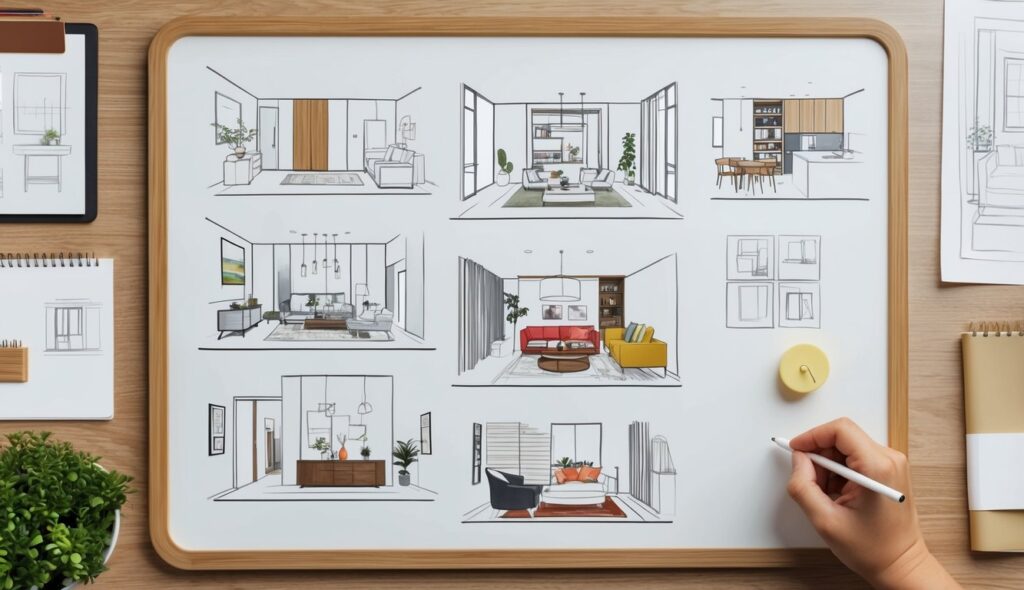Teak furniture stands out in architectural design due to its exceptional durability and resistance to decay. This hardwood, with its distinct grain and warm, rich color, embodies both strength and elegance.
Remember to repin your favorite images!
Its timeless appeal makes it a favorite choice for architects seeking to create a blend of luxury and sustainability in modern homes.
Incorporating teak into furniture design not only enhances aesthetic value but also aligns with eco-friendly principles.
Its ability to develop a silvery-grey patina over time truly showcases its natural beauty and longevity.
For architects, using teak in both indoor and outdoor setups ensures that the furniture will withstand various environmental conditions while retaining its charm.
Teak’s workability allows for versatility in creating different styles, from sleek modern pieces to rustic traditional designs.
This adaptability makes it an ideal material for various architectural projects.
By selecting high-quality teak, architects can ensure their designs remain visually stunning and structurally sound for years.
The Enduring Qualities of Teak in Furniture Design
Teak furniture stands out in architectural design due to its unmatched durability, elegant aesthetic, and ecological sustainability. Understanding these qualities is crucial for architects aiming to incorporate timeless elegance into their projects.
Teak’s Natural Characteristics and Advantages
Teak wood is renowned for its durability and resistance to decay.
These attributes stem from its natural oils, which make the wood resistant to moisture and weathering.
This weather-resistant property ensures that teak furniture maintains its structural integrity even in harsh conditions.
The tight grain of teak lends itself to clean lines and a smooth finish, enhancing its visual appeal.
The wood’s rich, warm color adds a touch of natural elegance to both indoor and outdoor settings.
Teak’s comfort and aesthetic make it a favorite for various architectural styles, from modern minimalism to traditional craftsmanship.
Sustainability and Ecological Impact of Teak
Teak is considered an eco-friendly material when sourced responsibly.
Many suppliers now rely on managed plantations to prevent over-harvesting.
These plantations ensure a continuous supply of teak while protecting natural forests.
The wood’s long lifespan further contributes to its sustainability, as teak furniture rarely needs replacing.
The use of sustainable teak supports efforts in environmental conservation.
Architects choosing teak can highlight their commitment to sustainable design by selecting furniture from verified sources.
This approach not only fulfills ecological standards but also appeals to clients who prioritize environmentally conscious choices.
The Role of Teak in Modern and Traditional Styles
Teak has a long legacy in design, with significant contributions from mid-century modern and Scandinavian designers. These styles emphasize simplicity, organic forms, and functional elegance—qualities inherent in teak.
In modern minimalism, teak furniture’s clean lines and simplicity complement open, airy spaces. Its warm tones provide a natural contrast to sleek, industrial materials.
On the other hand, traditional craftsmanship benefits from teak’s adaptability, allowing for intricate detailing and robust construction.
The versatility of teak makes it an enduring material that bridges various architectural styles, ensuring it remains a staple in both historical and contemporary designs.
Teak Furniture as a Smart Investment
Teak furniture provides unmatched durability and aesthetic appeal, making it a desirable choice for both residential and commercial spaces. It stands out in terms of material quality, craftsmanship, and minimal maintenance requirements.
Teak Furniture’s Longevity and Owner Benefits
Teak wood is renowned for its longevity.
Its natural oils make it resistant to water damage and decay, which is essential for outdoor furniture.
This characteristic ensures it lasts for decades, often longer than other materials.
This durability translates into long-term savings on replacements or repairs.
In addition to its longevity, teak furniture requires minimal maintenance.
Regular cleaning and occasional oiling keep it looking new.
Its rich color and warm tones enhance any space, contributing to its timeless beauty.
This makes it a valuable addition to properties, whether used in outdoor living areas or dining spaces.
Incorporating Teak into Architectural and Personal Spaces
Teak’s versatility allows it to fit seamlessly into various architectural designs.
Whether used as a sleek, modern patio set or a rustic, natural dining table, teak enhances the aesthetic value of any space.
The material’s ability to blend with different architectural styles makes it a favored choice among architects and designers.
Its eco-friendly nature further adds to its appeal, as sustainable harvesting practices ensure a low environmental impact.
Incorporating teak into architectural projects not only adds beauty but also aligns with eco-conscious design principles.
In residential settings, teak furniture complements a variety of personal styles, from minimalist to eclectic.
Its natural appeal and functional benefits make it an excellent investment for homeowners looking to enhance their living spaces.
For those in the market for high-quality options, the Westminster Teak is a standout choice.

